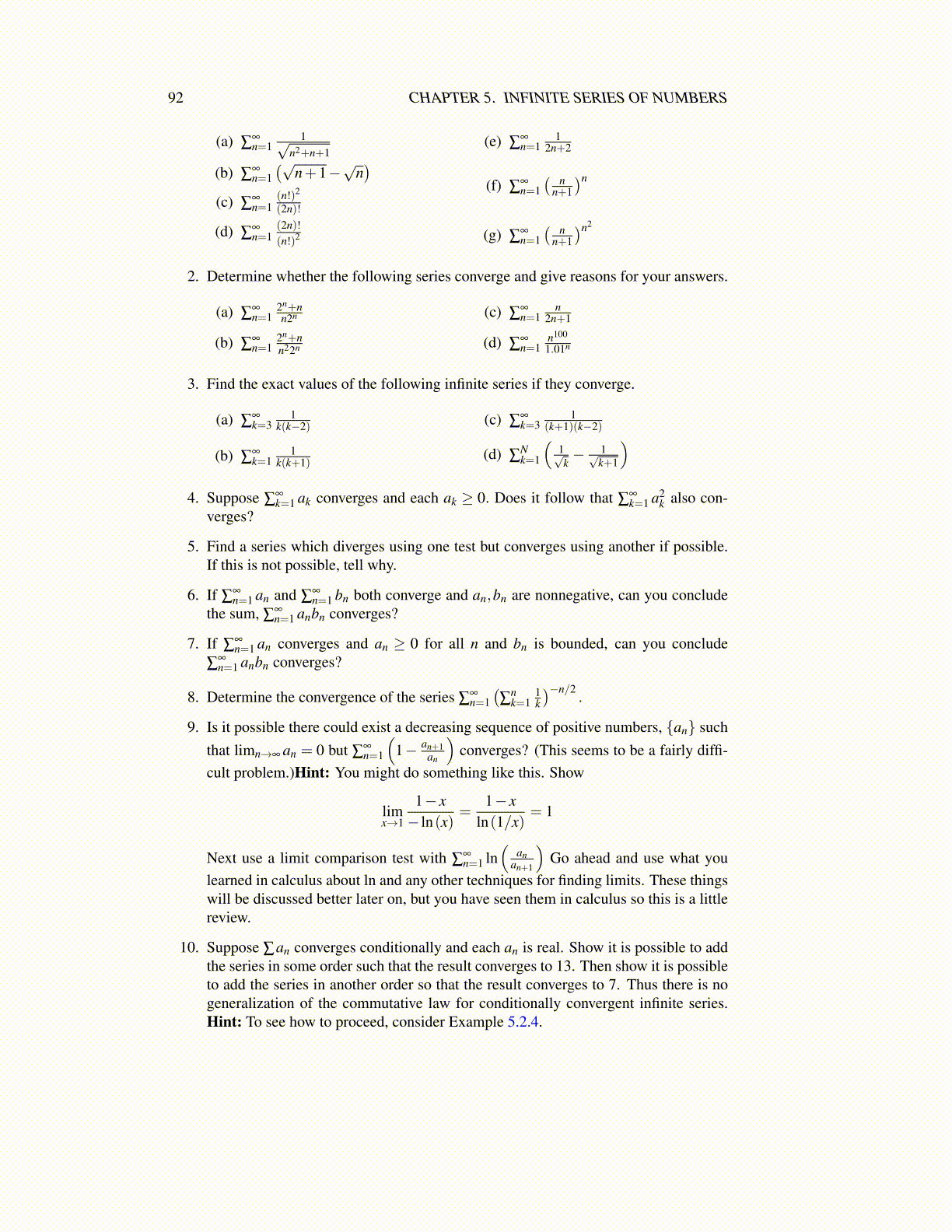
92 CHAPTER 5. INFINITE SERIES OF NUMBERS
5.4.2 Ratio And Root TestsA favorite test for convergence is the ratio test. This is discussed next. It is at the otherextreme from the alternating series test, being completely oblivious to any sort of cancella-tion. It only gives absolute convergence or spectacular divergence.
Theorem 5.4.7 Suppose |an|> 0 for all n and suppose limn→∞|an+1||an| = r. Then
∞
∑n=1
an
diverges if r > 1converges absolutely if r < 1test fails if r = 1
.
Proof: Suppose r < 1. Then there exists n1 such that if n≥ n1, then
0 <
∣∣∣∣an+1
an
∣∣∣∣< R
where r < R < 1. Then |an+1|< R |an| for all such n. Therefore,∣∣an1+p∣∣< R
∣∣an1+p−1∣∣< R2 ∣∣an1+p−2
∣∣< · · ·< Rp |an1 | (5.7)
and so if m > n, then |am| < Rm−n1 |an1 | . By the comparison test and the theorem on geo-metric series, ∑ |an| converges. This proves the convergence part of the theorem.
To verify the divergence part, note that if r > 1, then 5.7 can be turned around for someR > 1. Showing limn→∞ |an| = ∞. Since the nth term fails to converge to 0, it follows theseries diverges.
To see the test fails if r = 1, consider ∑n−1 and ∑n−2. The first series diverges whilethe second one converges but in both cases, r = 1. (Be sure to check this last claim.)
The ratio test is very useful for many different examples but it is somewhat unsatisfac-tory mathematically. One reason for this is the assumption that an ̸= 0, necessitated by theneed to divide by an, and the other reason is the possibility that the limit might not exist.The next test, called the root test removes both of these objections. Before presenting thistest, it is necessary to first prove the existence of the pth root of any positive number. Thiswas shown earlier in Theorem 2.11.2 but the following lemma gives an easier treatment ofthis issue based on theorems about sequences.
Lemma 5.4.8 Let α > 0 be any nonnegative number and let p ∈ N. Then α1/p exists.This is the unique positive number which when raised to the pth power gives α.
Proof: Consider the function f (x)≡ xp−α . Then there exists b1 such that f (b1)> 0and a1 such that f (a1)< 0. (Why?) Now cut the interval [a1,b1] into two closed intervalsof equal length. Let [a2,b2] be one of these which has f (a2) f (b2)≤ 0. Now do for [a2,b2]the same thing which was done to get [a2,b2] from [a1,b1]. Continue this way obtaining asequence of nested intervals [ak,bk] with the property that
bk−ak = 21−k (b1−a1) .
By the nested interval theorem, there exists a unique point x in all these intervals. ByTheorem 4.4.8
f (ak)→ f (x) , f (bk)→ f (x) .